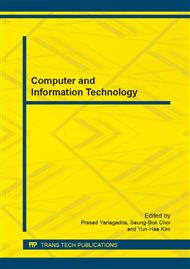p.615
p.623
p.627
p.631
p.636
p.640
p.644
p.651
p.655
Fisheye Lens Distortion Calibration Based on the Lens Charactetic Curves
Abstract:
The fisheye lens is a kind of ultra wide angle lens, which can produce a big super-wide-angle lens distortion. In order to cover a large scope of light, barrel distortion is artificially added to the optical system. However, in some cases this distortion is not allowed, then it requires calibrations of those distortions. Most of the traditional distortion calibration method uses target plane calibration to do it. This paper discusses the way of design fisheye lens, through which we can know the forming process of distortion clearly. Based on this paper, a simple and effective calibration method can be understood. Different from common camera calibration method, the proposed calibration method can avoid the error occurring in the process of calibrating test, that directly use the lens’ characteristic curve. Through multiple sets of experimental verifications, this method is effective and feasible.
Info:
Periodical:
Pages:
636-639
Citation:
Online since:
February 2014
Authors:
Price:
Сopyright:
© 2014 Trans Tech Publications Ltd. All Rights Reserved
Share:
Citation:


